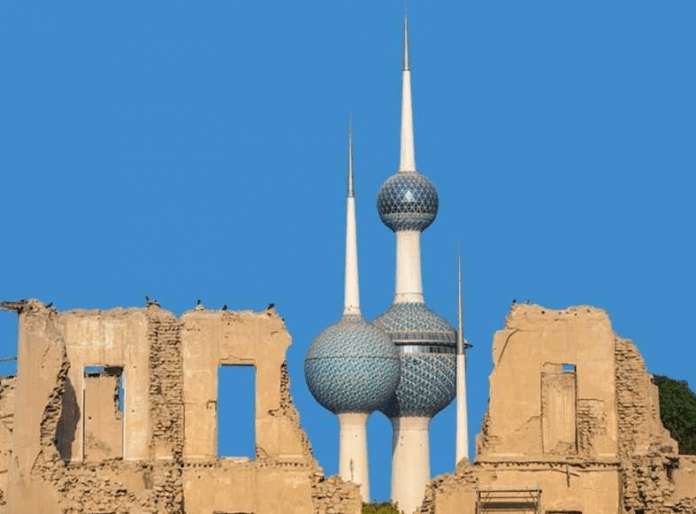Latest News
- 8 More Mental Health Clinics To Be Open
- Fishermen's Makeshift Houses Ordered To Be Removed By Kuwait
- Kuwait Cracks Down On Bachelors
- Non-oil Exports Of Kuwait Reached 106 Million Dinars In January,...
- Kuwait Joins The Global Celebration Of World Press Freedom Day
- Kuwaitis In UAE Advised To Exercise Caution Amid Unstable Weathe...
- MEW Has No Plans For Power Cuts And Is Ready To Tackle The Summe...
- Allow Employees To Transfer If Their Monthly Dues Are Not Paid
- Appeal Court Upholds Death Ruling In Friend’s Kill
- Pakistani Expat Died In A Tragic Accident
- The Hourly Domestic Workers Service Is A New Scam
- Kuwait Will Experience Moderately Hot Weather Over The Weekend
Kuwait’s Historical Landmarks Caught Up Between Neglect And Obliteration

Historical landmarks and antiquities are an integral part of the civilizations of nations and more often than not have sentimental values, and what we see in Kuwait today on this front can be termed outrageous neglect of historical monuments which depict the ancient history of Kuwait, in which our founding fathers struggled, worked and made sacrifices to protect the homeland in spite of harsh conditions and shortcomings.
The major responsibility to protect these landmarks and edifices and to keep in tact our heritage identity lies with the National Council for Culture, Arts and Letters.
We recall the builder of modern Kuwait, the father of the constitution and independence, the late Sheikh Abdullah Al-Salem Al-Sabah, who sensed the importance of these monuments because of their value to the history of Kuwait and issued the Amiri Decree to record and preserve these antiquities.
We also mention Kuwait’s signing of the “Cooperation Agreement in the Field of Antiquities Protection, Detection, Conservation, Restoration and Preservation between Member States of the Arab Bureau of Education for the Gulf States”, which was ratified and issued through Decree-Law No. 14 of 1989.
We refer here to the ministerial decision issued by the Council of Ministers on January 15, 1995, which requires government agencies to cooperate with the National Council for Culture, Arts and Letters to protect what remains of Kuwait’s heritage.
In addition to Law No. 10 of 2002 approving the accession of the State of Kuwait to the Convention for the Protection of the World Cultural and Natural Heritage that was approved by the General Conference of the United Nations Educational, Scientific and Cultural Organization (UNESCO).
Also, the signing of an agreement between the government of the State of Kuwait and the government of the French Republic regarding the French Institute of Archeology and Social Sciences in the State of Kuwait and its enforcement through Law No. 4 of 2017.
The demise of our diverse Kuwaiti heritage will be a national catastrophe that calls for an exceptional stand from the highest level in the state to preserve and protect our heritage.
Therefore, in the ancient and developed countries, we notice keen interest at the level of heads of state in the history, landmarks and monuments of their countries.
After raising the issue of historical buildings and monuments in the media, the Minister of Information and Culture, Minister of State for Youth Affairs, Chairman of the National Council for Culture, Arts and Letters, initiated a meeting with the Committee for the Development and Rehabilitation of Historic Buildings on January 25, and finally stated on July 26 about directives to issue ministerial decisions necessary to protect antiquities and historical buildings according to Antiquities Law 11 of 1960.
Kuwait today is in need of a major national historical project by transforming all the remaining sites and monuments into reputable national museums that simulate our history full of work, sacrifice and struggle through the development of all these heritage, archaeological and historical sites through a strategic plan to be a great legacy for our present and future generations, as well as for these sites to be an interface for visitors to Kuwait from abroad by introducing advanced systems and technology to present our culture in a simple and memorable way, and transfer information by creating a historical and cultural tourism environment in the country.
The Kuwaiti Research and Studies Center, has recently published three important parts of the book “The Landmarks of the Old City of Kuwait”, in which the historical places and landmarks in Kuwait are mentioned of which only a few parts remain, and which must be protected.
SOURCE TIMESKUWAIT
Trending News
-
 Expat Residency Law Amended By Kuwait Ministerial...
20 April 2024
Expat Residency Law Amended By Kuwait Ministerial...
20 April 2024 -
 Ministry Announces Separate Time For Amnesty Seeke...
21 April 2024
Ministry Announces Separate Time For Amnesty Seeke...
21 April 2024 -
 The Ministry Connects With Violators Of Residency...
23 April 2024
The Ministry Connects With Violators Of Residency...
23 April 2024 -
 Two Expats Are Arrested For Stealing From Salmiya...
17 April 2024
Two Expats Are Arrested For Stealing From Salmiya...
17 April 2024 -
 Work Permits Will Be Issued For One Year Under The...
27 April 2024
Work Permits Will Be Issued For One Year Under The...
27 April 2024 -
 AstraZeneca Admits Covid Vaccine Can Cause Rare Si...
29 April 2024
AstraZeneca Admits Covid Vaccine Can Cause Rare Si...
29 April 2024 -
 3 Expats Caught In Salmiya With 213 Bottles Of Loc...
23 April 2024
3 Expats Caught In Salmiya With 213 Bottles Of Loc...
23 April 2024 -
 Temperature Increases Cause Electricity Load Index...
21 April 2024
Temperature Increases Cause Electricity Load Index...
21 April 2024 -
 Al-Nuer Festival Celebrates Kuwaiti Agriculture Wi...
22 April 2024
Al-Nuer Festival Celebrates Kuwaiti Agriculture Wi...
22 April 2024 -
 Peak-time 'cut-offs' Raise Fears Of An Electricity...
22 April 2024
Peak-time 'cut-offs' Raise Fears Of An Electricity...
22 April 2024












Comments Post Comment